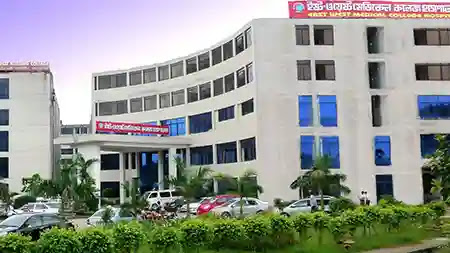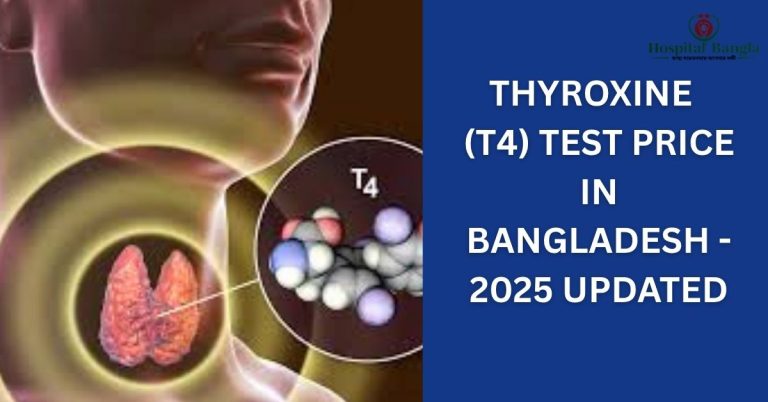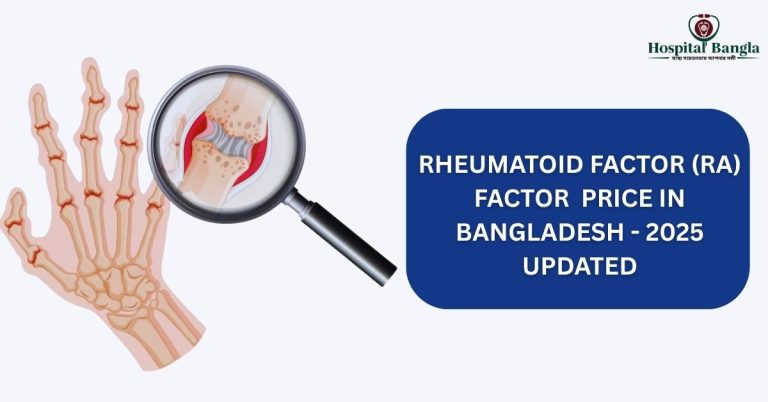Usg Whole Abdomen Test Price in Bangladesh – 2025 Update
The Usg Whole Abdomen Test, commonly referred to as an abdominal ultrasound, is a vital diagnostic tool that uses high-frequency sound waves to produce detailed images of abdominal organs, including the liver, gallbladder, pancreas, kidneys, and spleen. This non-invasive, radiation-free procedure is widely used in Bangladesh to diagnose conditions such as liver diseases, kidney stones, and pancreatic disorders. For those seeking cost transparency, the Usg Whole Abdomen Test price in Bangladesh varies significantly, typically ranging from 200 to 500 BDT in government hospitals and 1800 to 3000 BDT in private diagnostic centers as of 2025. Understanding the test’s purpose, preparation, and pricing is crucial for making informed healthcare decisions.
What is a Usg Whole Abdomen Test?
The Usg Whole Abdomen Test is an ultrasound examination that captures real-time images of the abdominal cavity. By moving a transducer over the abdomen, sound waves reflect off organs to create detailed visuals on a computer screen, offering a safe alternative to X-rays or CT scans. This test evaluates the size, shape, and position of organs, detecting abnormalities like tumors, cysts, or stones.
Clinical Significance
The test is instrumental in assessing:
- Liver: Identifies fatty liver, hepatitis, cirrhosis, or liver cancer.
- Gallbladder: Detects gallstones or inflammation (cholecystitis).
- Pancreas: Diagnoses pancreatitis or pancreatic tumors.
- Kidneys: Checks for stones, infections, or tumors.
- Spleen: Evaluates size and function.
- Abdominal Aorta: Screens for aneurysms.
Medical Conditions Requiring the Test
Doctors may order this test to investigate:
- Persistent abdominal pain or bloating.
- Abnormal liver or kidney function tests.
- Unexplained weight loss or jaundice.
- Suspected gallstones or kidney stones.
- Chronic conditions like hepatitis or kidney disease.
Alternative Names
The test is also known as:
- Abdominal ultrasound
- Whole abdomen sonography
- Complete abdominal USG
When is a Usg Whole Abdomen Test Recommended?
The Usg Whole Abdomen Test is recommended for various diagnostic, screening, and monitoring purposes. It’s particularly useful when symptoms or medical history suggest abdominal issues.
Symptoms and Conditions
Common reasons for the test include:
- Abdominal pain, swelling, or bloating.
- Repeated vomiting or nausea.
- Jaundice or yellowing of the skin.
- Abnormal blood tests indicating liver or kidney dysfunction.
- Suspected masses or fluid in the abdomen.
Diagnostic Use
The test helps diagnose:
- Hepatitis or cirrhosis
- Gallstones or cholecystitis
- Pancreatitis or pancreatic cancer
- Kidney stones or infections
- Abdominal aortic aneurysms
- Tumors or cysts in abdominal organs
Screening and Monitoring
- Screening: Used for high-risk individuals, such as those with a family history of liver or kidney disease.
- Monitoring: Tracks progression of known conditions like chronic hepatitis or kidney failure.
- Guidance: Assists in procedures like biopsies or fluid drainage.
Usg Whole Abdomen Test Preparation
Preparing for a Usg Whole Abdomen Test is straightforward but requires adherence to specific guidelines to ensure clear images.
Preparation Steps
- Fasting: Fast for 8–12 hours before the test to reduce intestinal gas, which can obscure images. Water is usually allowed.
- Hydration: Drink plenty of water to fill the bladder, especially for kidney or pelvic assessments, as a full bladder enhances visibility.
- Medications: Continue regular medications unless instructed otherwise by your doctor. Inform your healthcare provider about any medications that might affect results.
- Clothing: Wear loose, comfortable clothing to easily expose the abdomen.
- Jewelry: Remove metal objects or jewelry that could interfere with sound waves.
Procedure
The test takes 15–30 minutes:
- You lie on an examination table.
- A technician applies a water-based gel to your abdomen.
- A transducer is moved over the area to capture images.
- You may be asked to change positions or hold your breath briefly.
The procedure is painless, safe, and involves no radiation exposure.
Usg Whole Abdomen Test Price List in Government Hospitals in Bangladesh
Government hospitals in Bangladesh provide affordable access to the Usg Whole Abdomen Test, making it a cost-effective option for many. Below is a table of prices at major government facilities in 2025:
| Hospital Name | Location | Usg Whole Abdomen Test Price (BDT) | Contact Number |
|---|---|---|---|
| National Institute of Neurosciences and Hospital (NINS) | Dhaka | 220 | 02-9139900 |
| Dhaka Medical College Hospital (DMCH) | Dhaka | 200 | 02-55165088 |
| Bangabandhu Sheikh Mujib Medical University Hospital (BSMMU) | Dhaka | 300 | 02-9661051 |
| Shaheed Suhrawardy Medical College and Hospital (ShSMCH) | Dhaka | 200 | 02-9130800 |
| National Heart Foundation of Bangladesh | Dhaka | 500 | 02-9122560 |
| Sir Salimullah Medical College Mitford Hospital | Dhaka | 250 | 02-22350140 |
| Holy Family Red Crescent Medical College Hospital | Dhaka | 300 | 02-9662200 |
Note: Prices are based on standard rates as of June 2025. Contact hospitals directly to confirm current pricing, as costs may vary slightly.
Usg Whole Abdomen Test Price List in Private Hospitals in Bangladesh
Private hospitals and diagnostic centers in Bangladesh offer the Usg Whole Abdomen Test with advanced equipment and additional services, resulting in higher costs. Below is a table of estimated prices at major private facilities in 2025:
| Hospital/Diagnostic Center | Location | Usg Whole Abdomen Test Price (BDT) | Contact Number |
|---|---|---|---|
| Popular Diagnostic Centre Ltd. | Dhaka | 2500 | 09666 787801 |
| Square Hospital | Dhaka | 2500–3000 | 10616 |
| United Hospital | Dhaka | 2500–3000 | 10666 |
| Apollo Hospitals Dhaka | Dhaka | 2500–3000 | 10666 |
| Labaid Specialized Hospital | Dhaka | 2500–3000 | 10606 |
| Ibn Sina Hospital | Dhaka | 2500–3000 | 02-9122560 |
| Green Life Hospital | Dhaka | 2500–3000 | 09666710666 |
| Evercare Hospital | Dhaka | 2500–3000 | 10666 |
| Islami Bank Hospital | Dhaka | 2500–3000 | 02-9122560 |
| Central Hospital | Dhaka | 2500–3000 | 02-9122560 |
Note: Prices are estimated based on standard rates in Bangladesh as of June 2025. Actual costs may vary depending on the facility, equipment, and additional services. Verify prices directly with the hospital or diagnostic center.
Understanding Usg Whole Abdomen Test Results
Interpreting Usg Whole Abdomen Test results requires medical expertise, but understanding the basics can help you discuss findings with your doctor.
Normal Results
- Organs appear normal in size, shape, and position.
- No masses, cysts, stones, or abnormal fluid collections are detected.
- Blood flow in vessels, if assessed, is normal.
Abnormal Results
Abnormal findings may indicate:
- Enlarged organs: Hepatomegaly (liver) or splenomegaly (spleen).
- Masses or tumors: Benign or malignant growths.
- Stones: Gallstones or kidney stones.
- Fluid collections: Ascites (fluid in the abdomen).
- Structural abnormalities: Organ malformations or obstructions.
- Abnormal blood flow: Issues like aneurysms or blockages.
Factors Affecting Results
- Intestinal gas: Can obscure images, reduced by fasting.
- Obesity: May hinder clear visualization.
- Recent surgery or trauma: Can alter organ appearance.
- Technician skill: Impacts image quality.
- Equipment quality: Affects resolution and accuracy.
When to Consult a Doctor
If results are abnormal, your doctor may recommend:
- Additional imaging (e.g., CT scan, MRI).
- Blood tests or biopsies for confirmation.
- Specialist consultation (e.g., gastroenterologist, urologist).
Always discuss results with your healthcare provider to understand their implications and next steps.
Frequently Asked Questions
How accurate is the Usg Whole Abdomen Test?
The test is highly accurate for detecting structural abnormalities, but its effectiveness depends on the technician’s skill and equipment quality. It may miss small lesions or functional issues, requiring further tests for confirmation.
How long does it take to get the results?
Images are viewed in real-time, so preliminary results are often available immediately. A detailed report typically takes a few hours to one day, depending on the facility.
Is the test covered by insurance in Bangladesh?
Insurance coverage varies by provider and policy. Some plans include diagnostic tests like USG, but others may not. Check with your insurance provider for details.
How often should one get a Usg Whole Abdomen Test?
The test is performed as needed based on symptoms or to monitor known conditions. Routine screening is not typically recommended unless you’re at high risk for specific abdominal issues.
What is the difference between Usg Whole Abdomen and other USG tests?
Usg Whole Abdomen examines the entire abdominal cavity, covering multiple organs. Other USG tests, like USG of the liver or pelvis, focus on specific areas or organs for targeted evaluation.
Can the Usg Whole Abdomen Test be used during pregnancy?
Yes, it’s safe and commonly used to monitor fetal development or assess maternal abdominal organs. Pregnant women need a doctor’s prescription, as per Bangladesh’s PCPNDCT Act.
Is the Usg Whole Abdomen Test painful?
No, the test is painless. It involves applying gel and moving a transducer over the abdomen, causing no discomfort.
Conclusion
The Usg Whole Abdomen Test is a cornerstone of diagnostic medicine in Bangladesh, offering a safe, non-invasive way to assess abdominal health. With prices ranging from 200 to 500 BDT in government hospitals and 1800 to 3000 BDT in private facilities, it’s accessible across various budgets. Comparing prices on platforms like HospitalBangla.com helps you find cost-effective options without compromising quality. Consult your healthcare provider to determine if this test is necessary and to interpret results accurately. Early detection through the Usg Whole Abdomen Test price in Bangladesh can lead to timely treatment, improving health outcomes and peace of mind.







